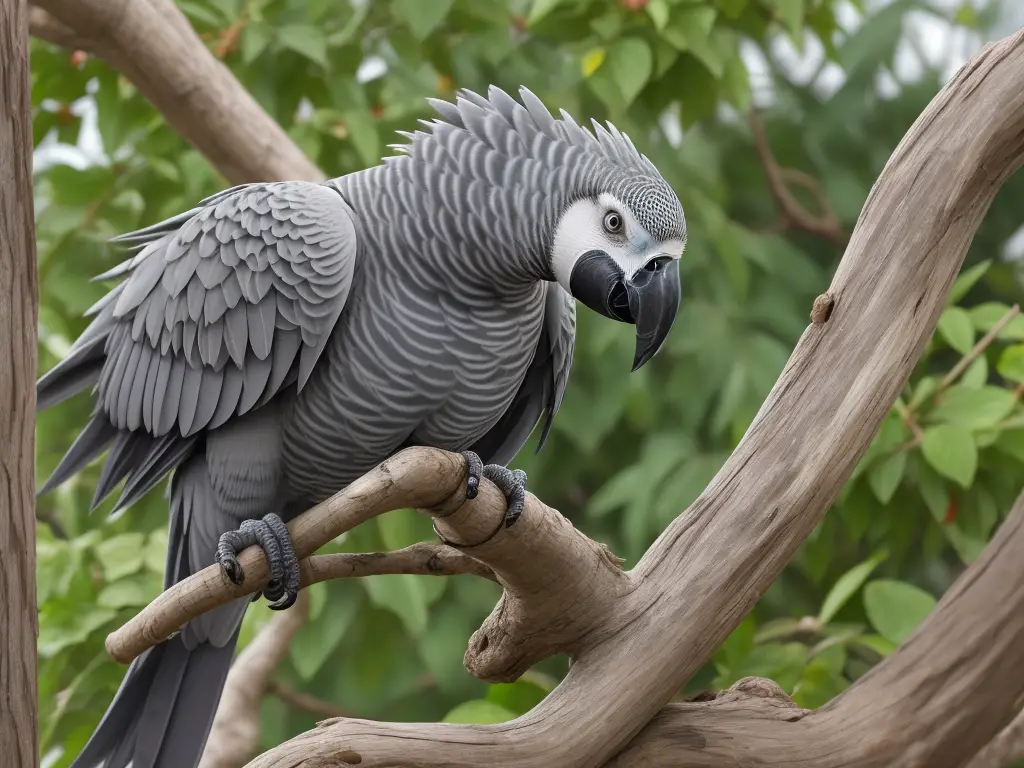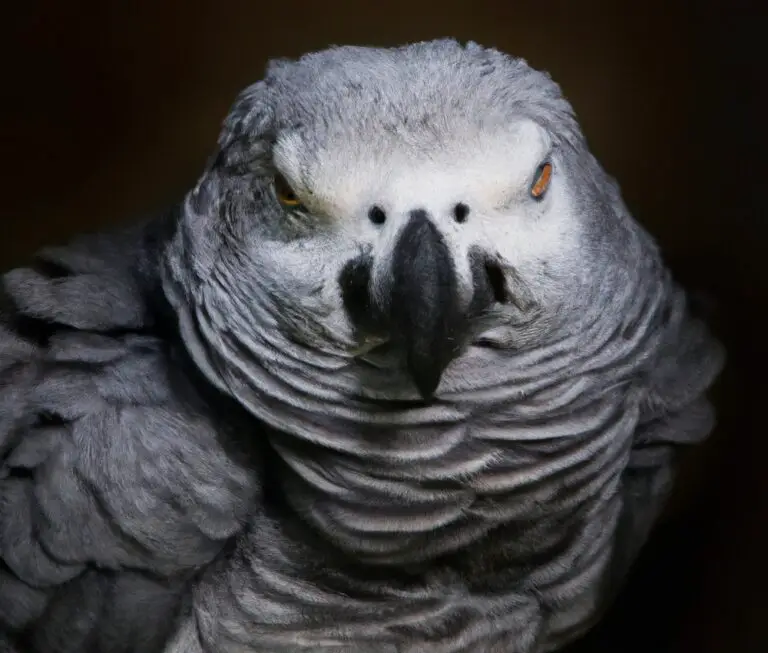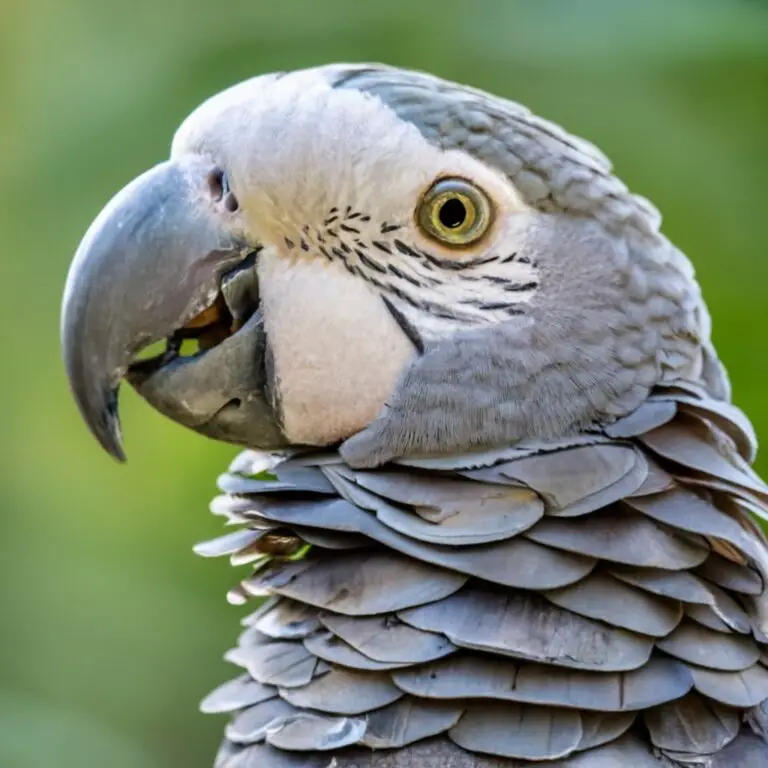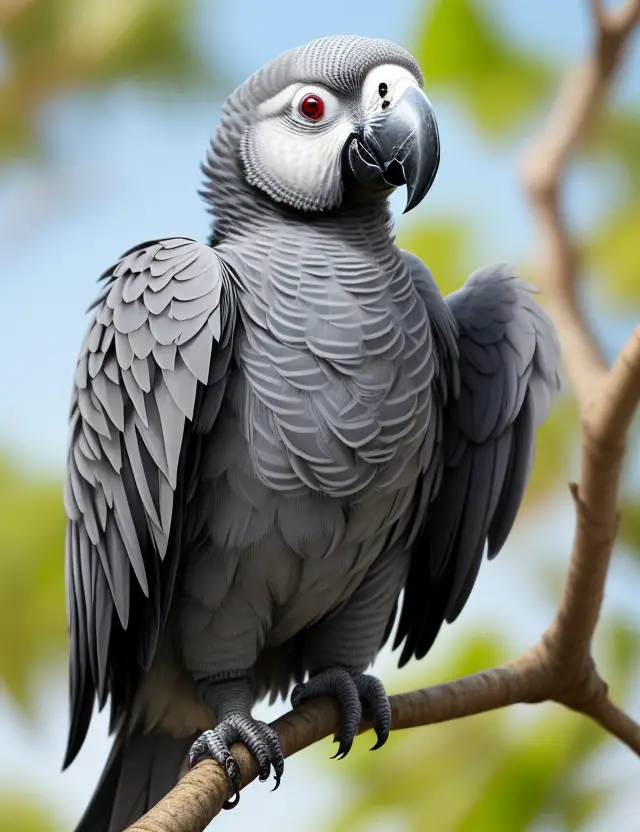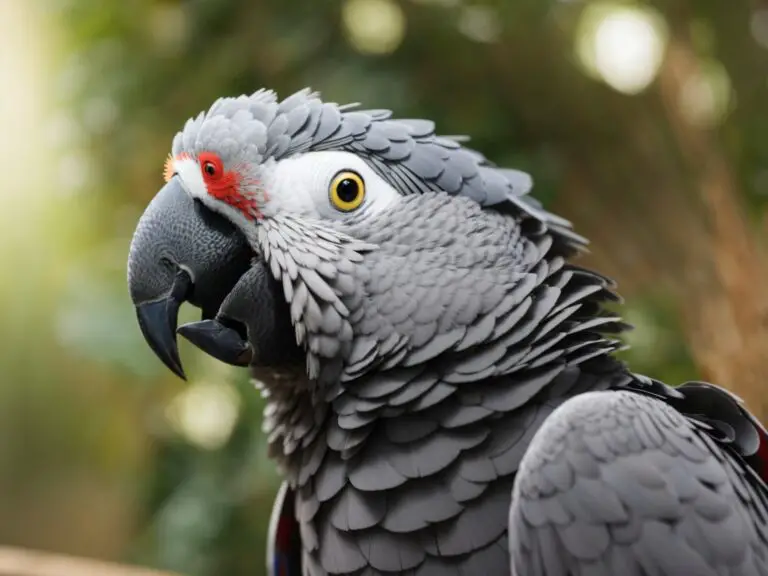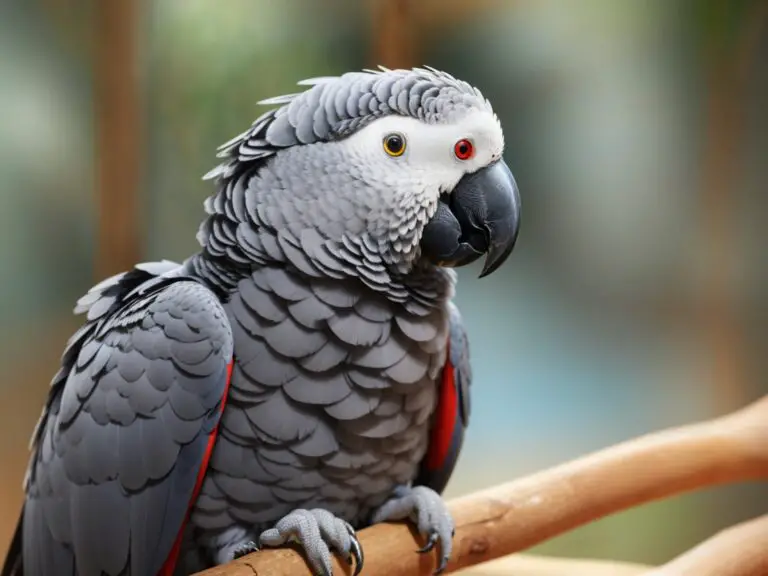Why Do African Grey Parrots Bob Their Heads?
Key Takeaways:
- The head bobbing behavior of African grey parrots is likely a form of communication and social interaction.
- African grey parrots may also bob their heads as a sign of excitement or anticipation.
- Head bobbing can serve as a form of exercise or stretching for African grey parrots.
- Environmental stimuli and social context can influence the frequency and intensity of head bobbing in African grey parrots.
If you’ve ever had the pleasure of meeting an African grey parrot, you may have noticed their unique head-bobbing behavior.
But what exactly does it mean?
As an avid bird lover, I’ll take you on a fascinating journey into the world of African grey parrots and their head-bobbing habits.
From their distinctive appearance to the reasons behind their rhythmic movements, we’ll explore the communication, stimulation, and environmental factors that influence this captivating behavior.
Get ready to delve into the fascinating behavior of African grey parrots and discover why they bob their heads with such flair and finesse.
Let’s get started!
| Reason | Explanation |
| Affection | African grey parrots bob their heads as a display of affection or excitement towards their owners or other parrots. |
| Communication | Head bobbing is a form of visual communication among African grey parrots. It can convey a range of meanings such as greetings, threats, or mating signals. |
| Rhythm | Head bobbing in African grey parrots may be a natural rhythmic movement that helps them maintain their balance or posture. |
| Curiosity | Parrots, including African greys, are naturally curious creatures. Head bobbing may be a way for them to assess their surroundings or investigate objects in their environment. |
| Stress or Anxiety | In some cases, African grey parrots may bob their heads as a reaction to stress or anxiety. It can be a self-soothing behavior or a response to a perceived threat. |
What are African grey parrots?
African grey parrots are highly intelligent birds known for their exceptional ability to mimic human speech and their distinct gray plumage.
Description of African grey parrots
African grey parrots are medium-sized parrots known for their distinctive gray feathers and red tails. They have a robust build and can grow up to 13 inches in length.
These intelligent birds have a wingspan of about 18-20 inches and can weigh around 14-21 ounces.
African grey parrots are native to the rainforests of West and Central Africa and are prized as pets for their exceptional talking and mimicking abilities. They have a lifespan of around 50-60 years and are highly social creatures.

Unique characteristics of African grey parrots
If I were to describe the unique characteristics of African grey parrots in a nutshell, I would say that they are highly intelligent, excellent mimics, and possess a remarkable ability to communicate through vocalizations. Additionally, their exceptional problem-solving skills and long lifespans make them highly sought after as pets and companions.
Understanding head-bobbing behavior
African grey parrots bob their heads to communicate and express their excitement or curiosity. Understanding this behavior can help you better connect with your feathered friend.
What is head-bobbing in parrots?
Head-bobbing in parrots refers to the rhythmic up-and-down movement of their head. It is a natural behavior that parrots use for communication, social interaction, and physical and mental stimulation.
Parrots may bob their heads to express curiosity, excitement, or to establish dominance.
It’s important to understand the triggers and patterns of head-bobbing in order to interpret their behavior accurately.
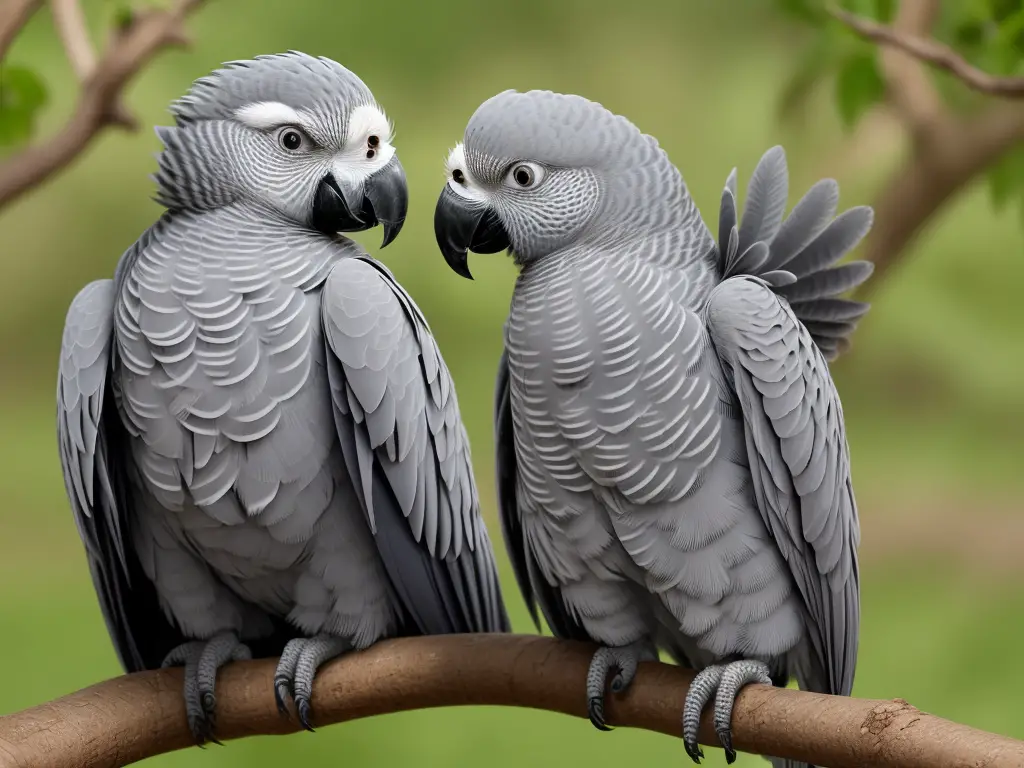
Common triggers for head-bobbing in parrots
Head-bobbing in parrots can be triggered by various factors. Some common triggers include social interactions, communication, excitement, curiosity, mating behavior, and environmental stimulation.
It’s important to understand that different parrots may have different triggers, so it’s essential to observe your parrot’s behavior to determine the specific cause of their head-bobbing.

Reasons why African grey parrots bob their heads
African grey parrots may bob their heads due to communication and social behavior, as well as to provide physical and mental stimulation.
Communication and social behavior
African grey parrots have complex communication and social behaviors. They use body language, vocalizations, and head-bobbing to communicate with other parrots and humans.
Head-bobbing is a common way for them to express excitement, curiosity, or their desire for attention.
It’s important to understand their unique behaviors to strengthen your bond with your parrot.
Physical and mental stimulation
Physical and mental stimulation is essential for African grey parrots to keep them healthy and engaged. Providing them with a variety of toys, puzzles, and foraging activities can help stimulate their minds.
Additionally, offering opportunities for exercise and flight, such as with a play gym or supervised outdoor time, can keep them physically active.
Regular interaction with their human companions is also important for their mental and emotional well-being.
Environmental factors influencing head-bobbing
Environmental factors such as noise, changes in lighting, presence of other animals, and new objects in their surroundings can all influence head-bobbing behavior in African grey parrots.
These factors can elicit a response from the parrot, causing them to bob their heads as a way of adjusting to their environment or expressing curiosity.
Additionally, environmental enrichment, such as providing toys and engaging in interactive play, can also stimulate head-bobbing behavior.
Communication through head-bobbing
African grey parrots use head-bobbing as a form of communication with other parrots and humans.
Head-bobbing as a form of body language
Head-bobbing in African grey parrots is a form of body language. It is a way for them to communicate their mood, intentions, and social behavior.
Parrots may bob their heads to show excitement, curiosity, or to get attention.
Each head-bobbing pattern has a specific meaning, so it’s important to pay attention to context and other body language signals.
Specific head-bobbing patterns and meanings
African grey parrots exhibit different head-bobbing patterns and each carries a unique meaning. Here are a few examples:
- Up and down bobbing: This can indicate excitement, curiosity, or a desire for attention.
- Side-to-side bobbing: It might signify a desire for interaction or a need to communicate.
- Rapid bobbing: This could indicate aggression, anxiety, or fear.
- Gentle, rhythmic bobbing: It often signifies contentment and relaxation.
- Repetitive bobbing: This may be a sign of boredom or a need for mental stimulation.
Remember, understanding your parrot’s body language and the context of the situation is essential in interpreting their head-bobbing behaviors.
The importance of mental and physical stimulation for African grey parrots
African grey parrots thrive on mental and physical stimulation for their overall well-being.
Cognitive enrichment activities for parrots
Cognitive enrichment activities can keep parrots mentally stimulated.
Try these:
- Puzzle toys: Provide toys that require problem-solving, like foraging puzzles or treat-dispensing toys.
- Training: Teach your parrot tricks and commands to engage their intelligence.
- Interactive games: Play games that involve hiding treats or objects for your parrot to find.
- Novelty items: Introduce new and safe objects for your parrot to explore and investigate.
- Social interaction: Spend quality time with your parrot, interact and communicate with them.
These activities help keep your parrot’s mind active, preventing boredom and encouraging mental development.

Physical exercise options for parrots
Parrots, including African grey parrots, require physical exercise to keep them physically fit and mentally stimulated. Some physical exercise options for parrots include:
- Flight: Providing enough space for your parrot to fly freely within a safe and secure environment is crucial. This allows them to exercise their wings and build muscle strength.
- Climbing: Parrots love to climb, so providing them with a variety of climbing opportunities such as rope perches, ladders, and play gyms can help them stay active and engaged.
- Foraging: Incorporating foraging activities into your parrot’s daily routine helps simulate their natural instinct to search for food. You can hide treats or their regular diet in interactive toys or puzzle feeders.
- Toys: Offering a variety of toys that encourage physical interaction, such as swings, bells, and toys that can be shredded, can keep your parrot mentally and physically stimulated.
Remember, each parrot is unique, so it’s essential to observe your parrot’s preferences and adjust their exercise options accordingly. Regular physical exercise will help promote their overall well-being.
Frequently Asked Questions
How can I encourage my African grey parrot to engage in mental stimulation activities?
To encourage your African grey parrot to engage in mental stimulation activities, try the following:
- Provide interactive toys and puzzles that require problem-solving skills. This can include foraging toys or puzzles that require them to manipulate objects to access treats.
- Teach your parrot new tricks or commands. This not only stimulates their mind but also strengthens the bond between you and your feathered friend.
- Offer a variety of toys to keep them engaged and prevent boredom. Rotate the toys regularly to keep their environment stimulating.
- Play games with your parrot, such as hide-and-seek or fetch. These activities promote mental engagement while also providing physical exercise.
- Provide opportunities for social interaction with both humans and other parrots, if possible. African grey parrots are highly social creatures and thrive on social stimulation.
Remember, mental stimulation is as important as physical exercise for the well-being of your African grey parrot. By incorporating these activities into their daily routine, you can keep them happy, healthy, and intellectually stimulated.
What are some natural environmental factors that can trigger head-bobbing in African grey parrots?
Natural environmental factors that can trigger head-bobbing in African grey parrots include:
- Presence of other parrots: African grey parrots may bob their heads in response to the presence of other parrots as a form of social interaction.
- Changes in lighting: Bright or dim lighting conditions can stimulate head-bobbing behavior in parrots.
- Seasonal changes: During breeding season, African grey parrots may engage in head-bobbing as a mating behavior.
- Sound stimulation: Certain sounds or noises in the environment can prompt parrots to bob their heads.
- Perched position: Parrots may bob their heads when perched to maintain balance or adjust their position.
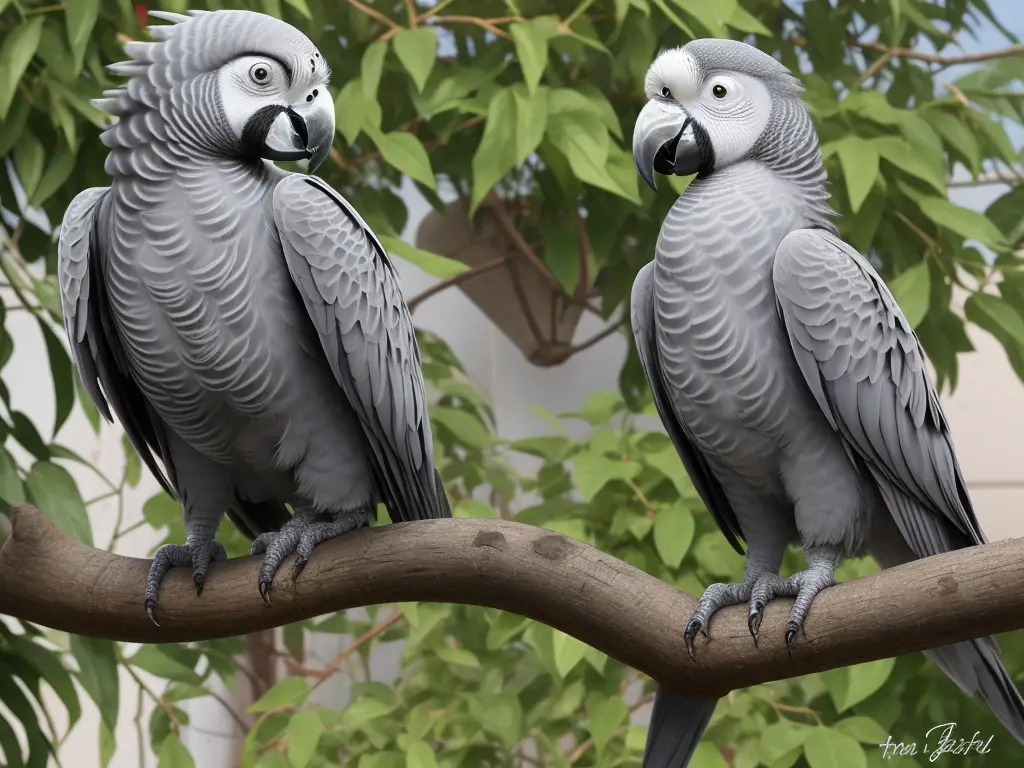
Final Verdict
African grey parrots are fascinating creatures with unique behaviors, one of which is head-bobbing.
This behavior serves multiple purposes, including communication, social interaction, and the need for mental and physical stimulation.
By understanding the triggers and meanings behind head-bobbing, parrot owners can enhance their parrot’s quality of life through targeted enrichment activities.
It’s important to differentiate between normal and abnormal head-bobbing and seek professional help if necessary.
Overall, providing mental and physical stimulation for African grey parrots is crucial for their well-being and happiness.

